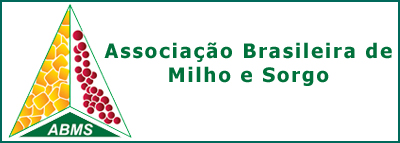PRODUÇÃO DE FORRAGEM DE MILHO EM DIFERENTES DENSIDADES DE SEMEADURA E ÉPOCAS DE COLHEITA
DOI:
https://doi.org/10.18512/1980-6477/rbms.v16n2p204-216Keywords:
Zea mays, forragem para pronto consumoAbstract
RESUMO - O experimento teve como objetivo avaliar a produção de biomassa, a composição física e química da planta de milho para forragem. O delineamento experimental foi em blocos inteiramente casualizados com arranjo fatorial de tratamentos com esquema de parcelas subdivididas no tempo. O híbrido foi cultivado em cinco densidades de semeadura (80, 160, 240, 320 e 400 mil plantas ha-1) e colhido em cinco épocas (40, 50, 60, 70 e 80 dias após a emergência). Foram avaliados a composição percentual das estruturas anatômicas da planta pela segmentação dos componentes colmo e folhas e o potencial produtivo de biomassa verde e de biomassa seca (kg ha-1). O aumento da densidade populacional afetou a distribuição dos componentes da matéria seca total das folhas em detrimento do colmo. As variáveis avaliadas apresentaram diferença significativa para o fator época de colheita, havendo diminuição linear na relação folha colmo (fo/co), teor de proteína bruta (% PB) e de minerais (cinzas) e aumento no teor de matéria seca da planta inteira, folha e colmo (% MS), produção de matéria seca total (kg de MS ha-1), teor de fibra em detergente neutro (% FDN), teor de fibra em detergente ácido (% FDA) e dos nutrientes digestíveis totais (% NDT). O milho forragem apresenta-se como uma técnica de grande potencial de produção de matéria seca, fonte de fibra de alta qualidade para ruminantes com rápido ciclo de crescimento, independentemente da densidade testada, com possibilidade da manipulação da composição bromatológica em função da época de corte variando de 40 a 80 dias após a emergência.
Palavras-chave: Zea mays L, composição bromatológica, forragem, produção de biomassa.
CORN FORRAGE PRODUCTION, CULTIVATED IN DIFFERENT PLANTING DENSITIES
ABSTRACT - The experiment has the objective to evaluate biomass production and the physical and chemical of plant composition, as forage. The experimental design was randomized complete block split plot. The hybrid was grown in five seeding densities (80; 160; 240; 320 and 400 thousand plants ha-1) and harvested in five times (40, 50, 60, 70 and 80 days after emergence). The anatomical structure composition by segmentation of stem and leaf and the productive potential of biomass produce were evaluated. The increase in plant population affected the distribution of the components of total dry mass with an increase in leaf against the stem. All measured response variables showed a significant difference to the harvest time factor, with linear decrease proportion between leaf and stem (fo/co), crude protein (%CP), and minerals (ash) and increase of dry matter in biomass, leaf and stem (%DM), total production of nature matter (kg of MN ha-1), total production of dry matter (kg of MS ha-1), neutral detergent fiber (%NDF), acid detergent fiber (%ADF) and total digestible nutrients (%TDN). The forage corn can be a technique of great potential dry matter production, highly fiber quality for ruminants, rapid growth cycle, regardless of tested density, with possibility of manipulation of composition bromatological, according to the cutting time ranging from 40 to 80 days after emergence.
Keywords: Zea mays L, bromatological composition, forage, biomass production.
Downloads
Published
How to Cite
Issue
Section
License
Authors retain copyright and grant the journal right of first publication with the work simultaneously licensed under the Creative Commons Attribution License that allows the sharing of work and recognition of the work of authorship and initial publication in this journal.
Authors are able to take on additional contracts separately for non-exclusive distribution of the version of the paper published in this journal (eg, in an institutional repository or publish as a book), with acknowledgment of its initial publication in this journal.
Authors are permitted and encouraged to post their work online (eg, in institutional repositories or on their website) at any point before or during the editorial process, as this may leadto productive exchanges, as well as increase the impact and citation of published work.



